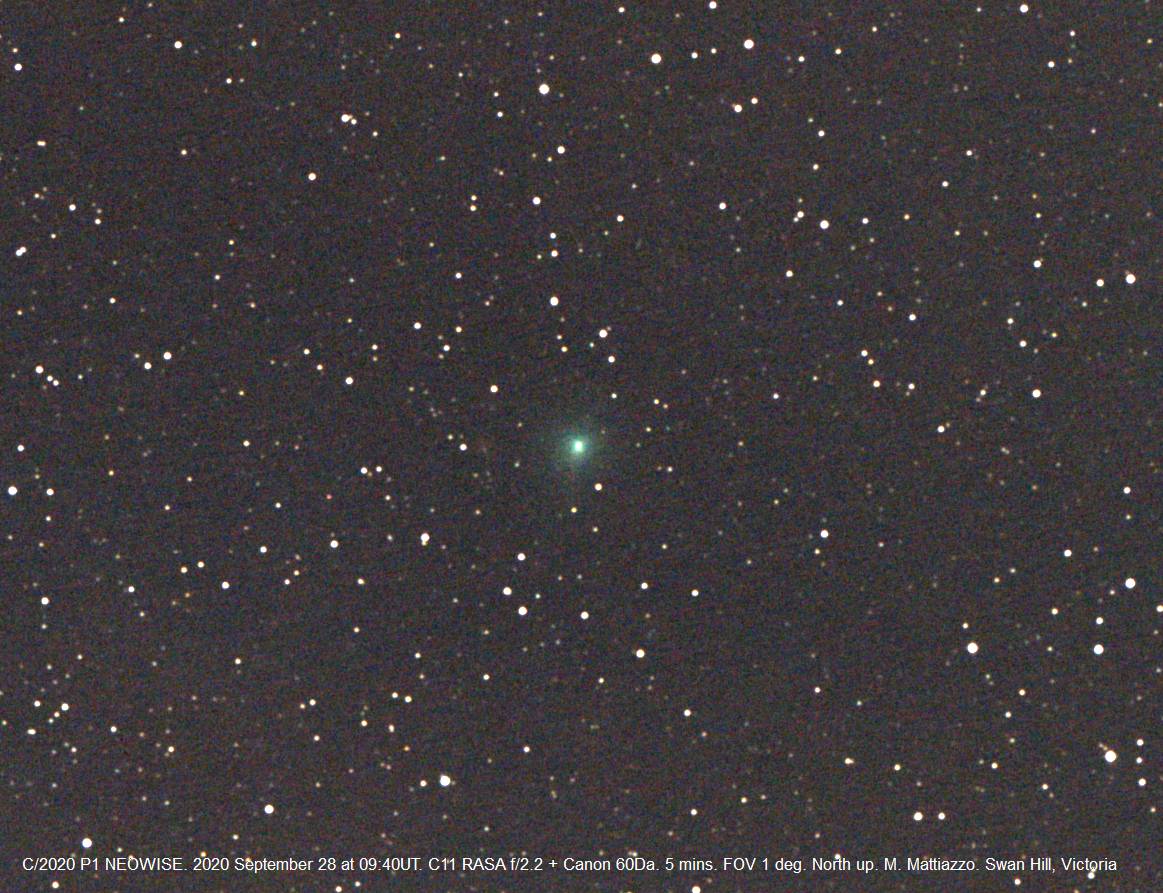Comet P1 NEOWISE will make a brief dawn appearance for northern hemisphere observers in late October/early November.
So, how about Comet F3 NEOWISE this summer? 2020 saw the rapid appearance of one of the best northern hemisphere comets in recent memory, and the first good comet for us up north for the 21st century, as F3 NEOWISE graced early morning skies, and transitioned to a fine dusk apparition for an encore performance in the last half of July.
F3 NEOWISE reminded us that all comets are worth keeping tabs on… just in case. But wait, there’s more. The Near-Earth Object Wide-field Infrared Survey Explorer (NEOWISE) caught another intriguing object on August 2, 2020 as part of its extended sky survey mission: Comet C/2020 P1 NEOWISE is set to become a fine binocular object in late October and early November.
This is the 16th NEOWISE comet to date, and the first find for the mission since the historic discovery and apparition of C/2020 F3 NEOWISE.
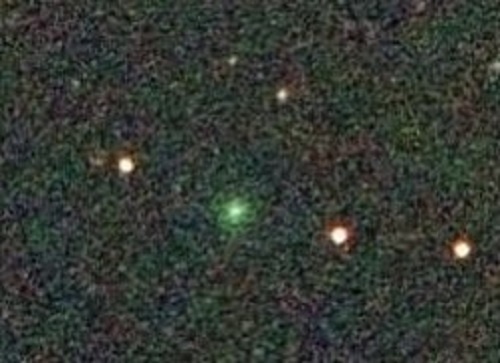
To be sure, P1 NEOWISE seems to be a tiny object as comets go. P1 NEOWISE was discovered while it was still 1.7 Astronomical Units (AU) from the Sun, and 1.2 AU from the Earth. The good news is, the comet seems to be an active one, currently at magnitude +10 with a bullet, brightening ahead of expectations.
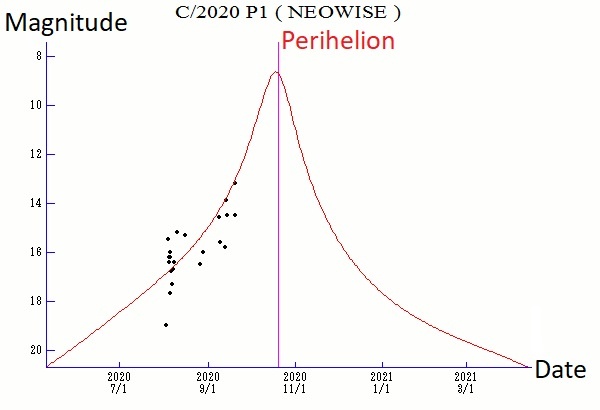
P1 NEOWISE will be a bashful one, with a brief apparition low to the east at dawn for the last half of October into November. Part of the problem is, the small comet is looping through the inner solar system and then rushing directly away from the Earth after perihelion; one of the factors that really helped F3 NEOWISE early this summer was that it moved in the general direction of the Earth after perihelion.
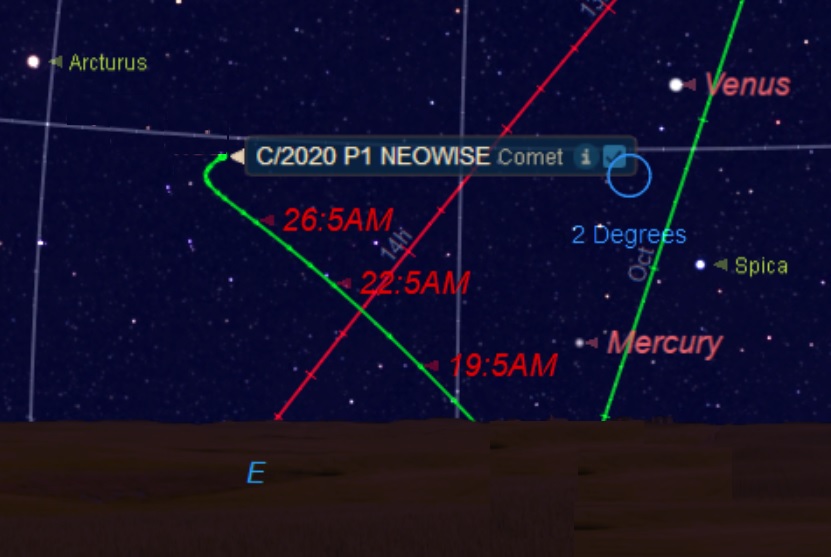
Near perihelion, the comet will really be truckin’ cross the sky, at about 2.5 degrees (the width of five Full Moons) a day.
Comet C/2020 P1 NEOWISE is on a hyperbolic orbit, with an eccentricity just a shade over 1.0 based on 49 days worth of observations, meaning it’s most likely on an extremely long period orbit measured in thousands—perhaps millions—of years. With an orbit inclined 45 degrees relative to the ecliptic, P1 NEOWISE reaches perihelion just outside the orbit Mercury. Perhaps, the comet is a dynamically new object, making its first passage through the inner solar system… if so, that’s a plus for the prospects of the comet brightening ahead of expectations.
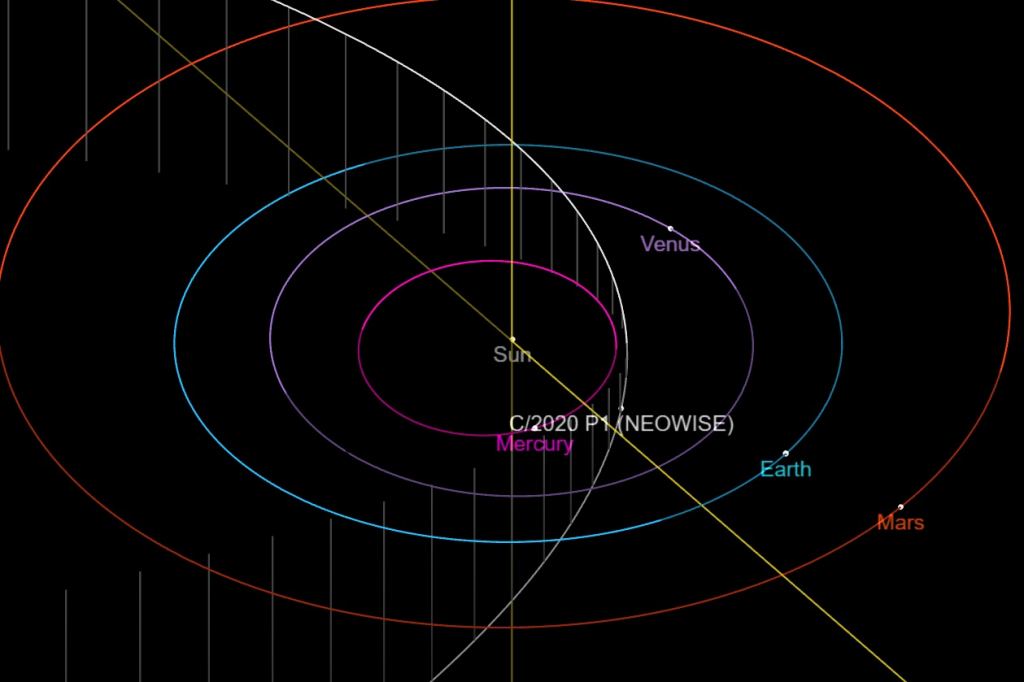
Here’s the celestial dates with destiny for Comet C/2020 P1 NEOWISE on its 2020 apparition:
October
(note: “passes near” means a passage of one degree or less, unless otherwise noted).
6-Crossed into Hydra
9- Passed 1.5 degrees from M68
10-Passed into Corvus
11-Passed near +2.6 Kraz (Beta Corvi)
12- Passed closest Earth, approach at 0.659 AU distant.
14-At its brightest (+8th magnitude?)
16-Crosses into Virgo, and actually transits (!) the face of the Sombrero Galaxy Messier 104
17-Passes near the +4.6 magnitude star Chi Virginis
19-Crosses the ecliptic plane northward
20-Reaches perihelion, at 0.34 Astronomical Units (AU) from the Sun
21-Crosses the celestial equator northward
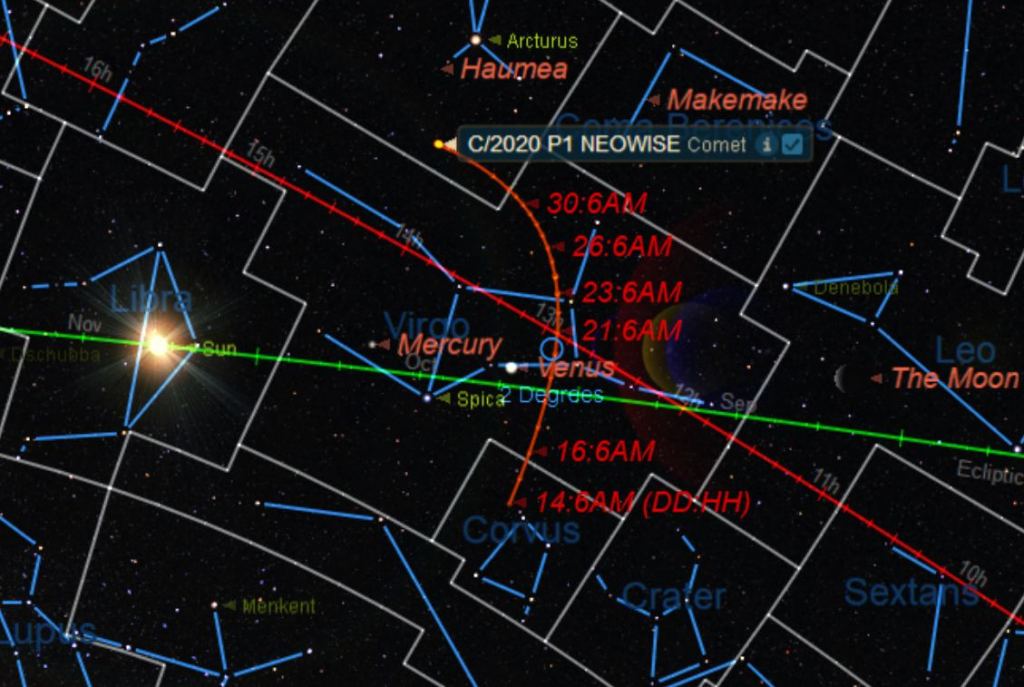
November
1-Crosses into Boötes
10-May drop back down below +10th magnitude
Observing comets is as simple as sweeping the suspect field using binoculars and looking for a fuzzy ‘star’ that stubbornly refuses to snap into focus. Binoculars are ideally suited for this task, as they give you a wide-field of view, incorporated with a true (as opposed to flipped or inverted) view, a much more intuitive way to hunt through the starry sky.
What might the next few months bring in terms of cometary activity? Well, though the next ‘bright one’ could always show up at anytime, we do have a steady stream of binocular comets, including C/2020 M3 ATLAS, 88/P Howell, and C/2020 S3 Erasmus in the deep-sky pipeline… watch this space for more to come!
Lead image credit: Comet P1 NEOWISE from September 28th. Credit: Michael Mattiazzo.

